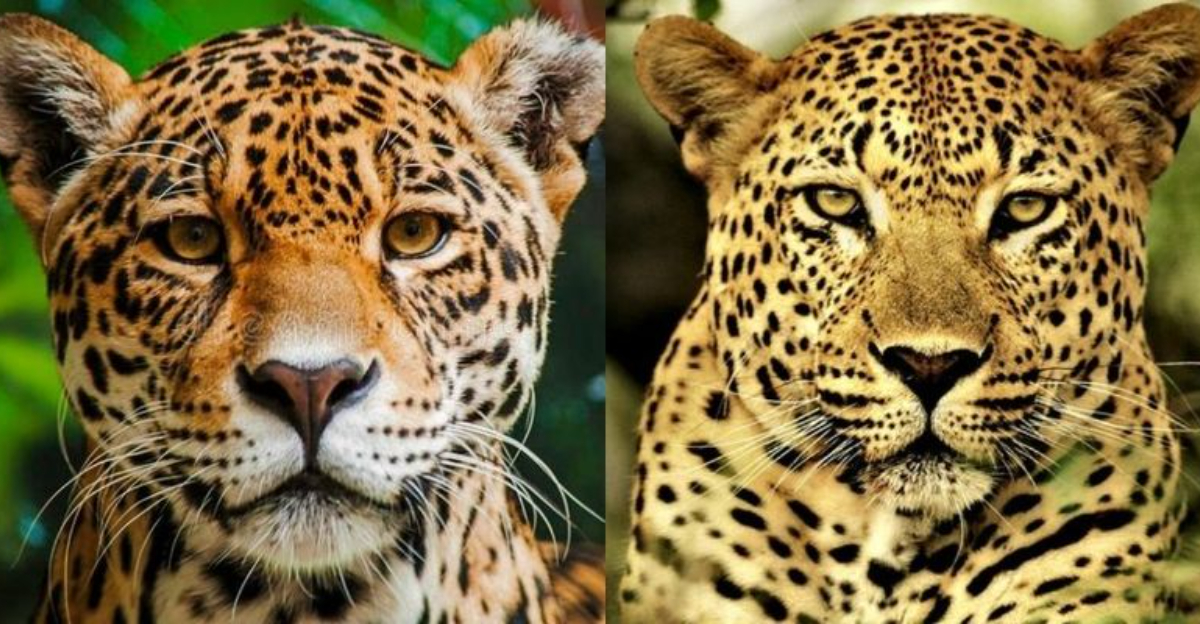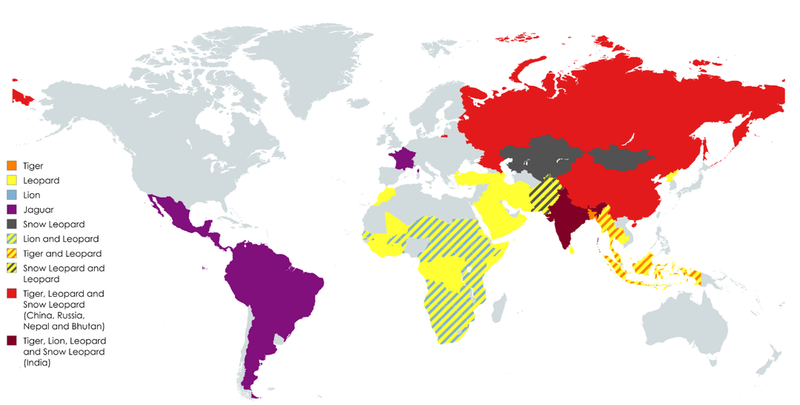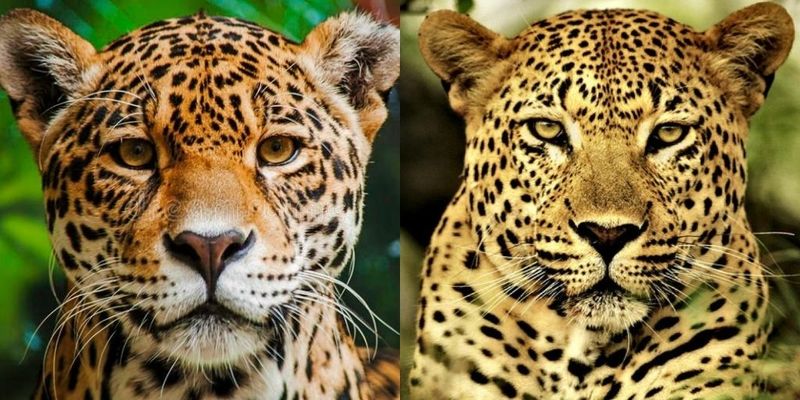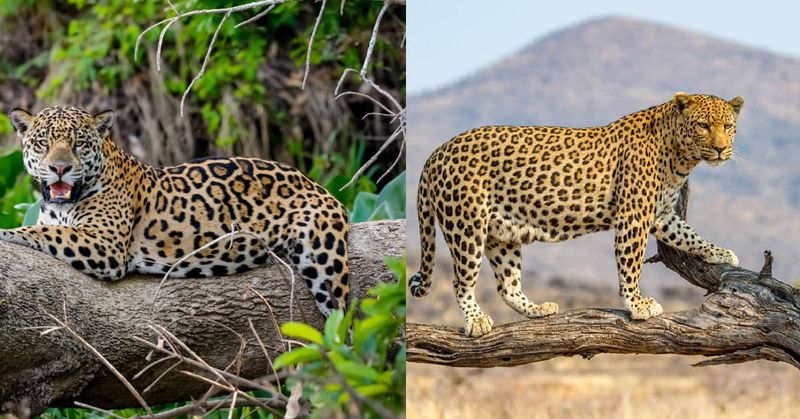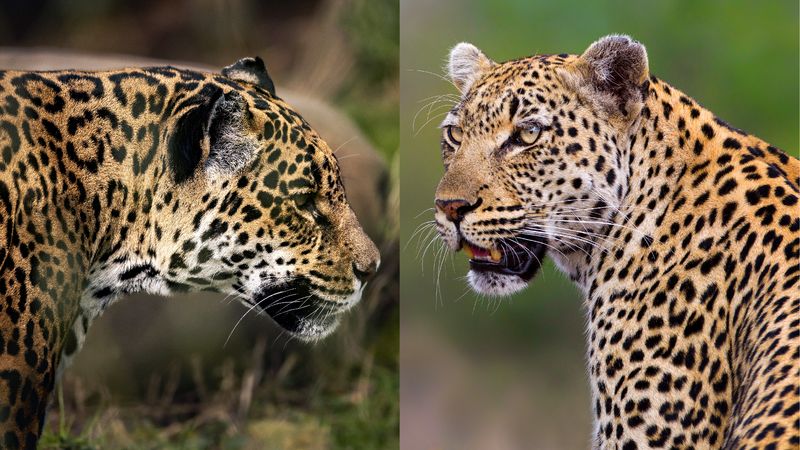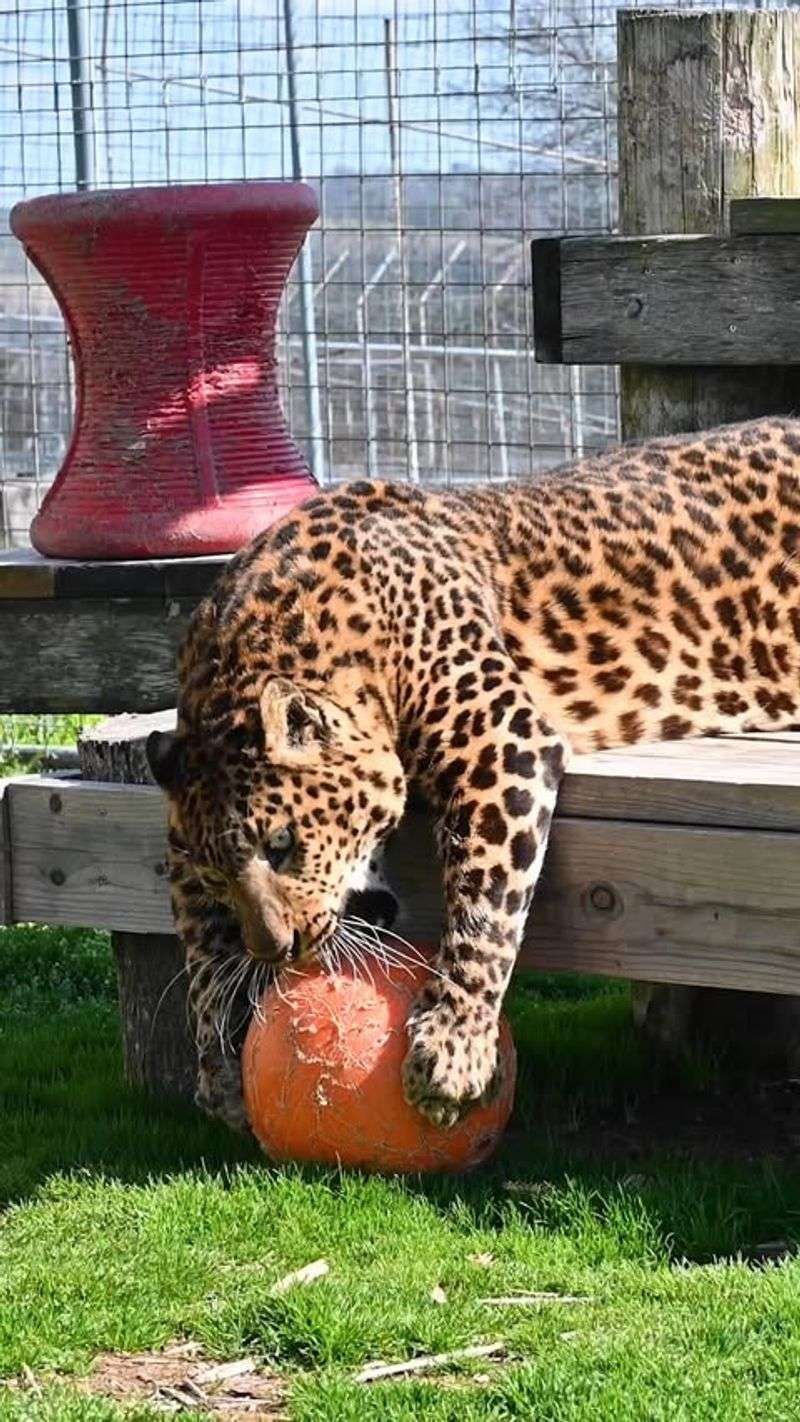📖 Table of Content:
Leopards and jaguars, though both members of the *Panthera* genus, exhibit distinct differences in appearance, behavior, and habitat. This blog post highlights five key distinctions between these magnificent big cats, unraveling the unique traits that set them apart.
1. Geographical Distribution
Have you ever wondered where you might spot a leopard or jaguar in the wild? Leopards (*Panthera pardus*) roam the vast landscapes of Africa and parts of Asia, including the Middle East, India, and China. In contrast, jaguars (*Panthera onca*) inhabit the lush tropical regions of Central and South America, from Mexico to Argentina. These geographical distinctions not only highlight the diverse ecosystems they thrive in but also their adaptation to different climates and terrains. Discovering a leopard means venturing into savannas and forests, while encountering a jaguar requires exploring dense rainforests.
2. Physical Characteristics
Imagine standing face-to-face with these majestic cats. Leopards are generally smaller, with a slender and agile build, perfectly designed for climbing and swift movements. In contrast, jaguars have a more robust and stocky physique, reflecting their immense strength and power. Their coat patterns add another layer of distinction: leopards sport smaller, closely spaced rosettes without central spots, while jaguars boast larger rosettes with a telltale central spot inside each. These patterns are not just decorative but serve as camouflage in their respective environments, aiding in stealthy hunting.
3. Behavior and Habitat
Ever curious about how these big cats hunt and survive? Leopards are the opportunistic hunters of the savanna, skilled at dragging their prey into trees to safeguard against scavengers. Meanwhile, jaguars are the powerhouses of the jungle, boasting the strongest bite among big cats, capable of crushing skulls and shells. They excel in water, often hunting caimans and capybaras. Leopards adapt to various environments, from grasslands to forests, while jaguars prefer the dense, tropical rainforests and wetlands near water. This adaptability underscores their evolutionary prowess.
4. Conservation Status
In the face of environmental challenges, how are these big cats faring? Leopards are listed as Vulnerable, primarily due to habitat loss and poaching, threatening their existence in the wild. Conversely, jaguars are classified as Near Threatened, facing similar threats in their native regions. These statuses underscore the urgent need for conservation efforts to protect these iconic predators and their habitats. Understanding their plight inspires action and awareness, fostering efforts to ensure that future generations may also witness the beauty and majesty of leopards and jaguars in the wild.
5. Fun Fact – Bite Force
Did you know that jaguars have the most powerful bite force of all big cats? This remarkable strength allows them to crush bones and even pierce turtle shells, a testament to their predatory prowess. Leopards, on the other hand, may not have the same bite force but compensate with unmatched agility and stealth. Their ability to haul prey into trees is unparalleled, showcasing their adaptability and cunning. These differences in hunting tools and techniques underscore the unique evolutionary paths each species has taken. Their survival strategies are as distinct as their appearances.
